Gambue people share many traditions with their northern neighbors: the Muila and the Handa. One of them is the use, by women, of bead and clay necklaces. They also have complex hairstyles, which indicate the marital status of each woman. Nowadays, they can only be found in remote villages and only in the older generations can traditional tribal clothing be seen, due to the influence of the heavily westernized Humbi people, their southern neighbors.
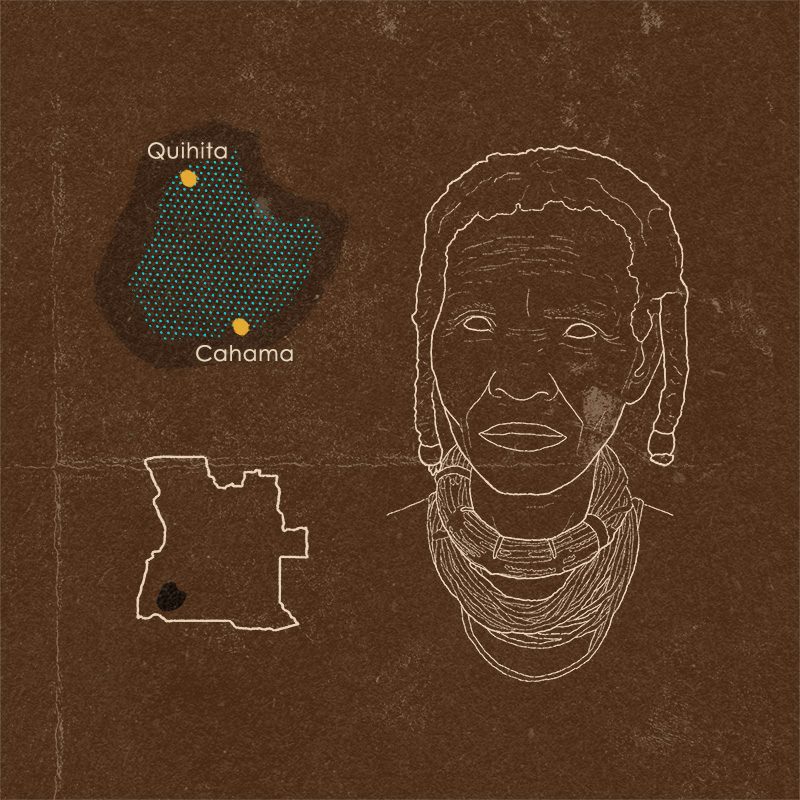
Location of the Gambube tribe in the territory of Angola.
Gambue population and ecosystem
About 25,000 Gambue live at the feet of the small rocky hills of the Huila Plateau and in the forested plains south of Chibia.
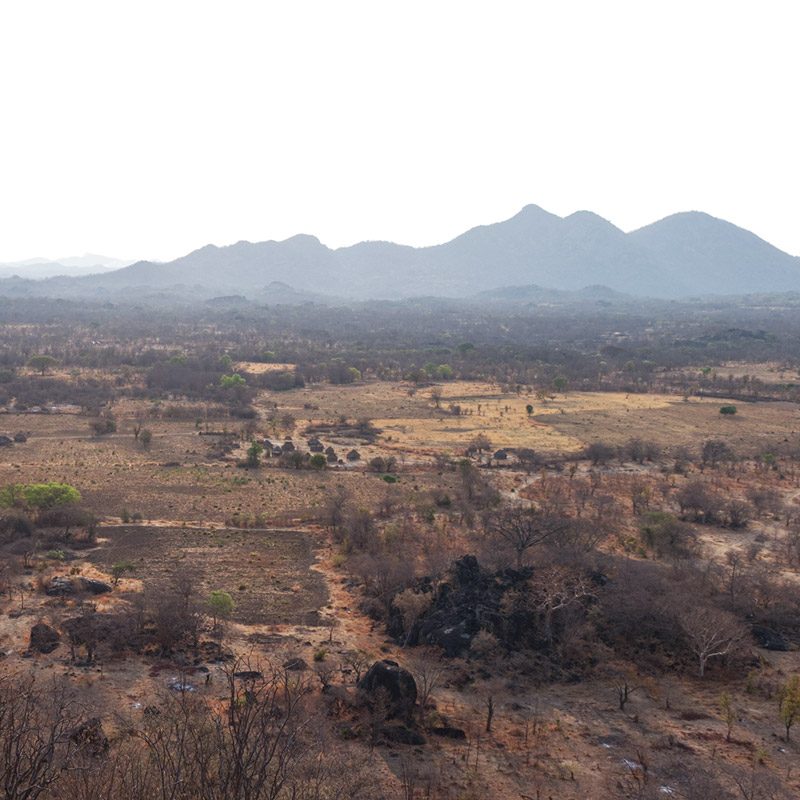
Views of the forested plains near Chibia in Angola.
Gambue economy and social organization
They are cattle herders and also practice subsistence agriculture. Hunting is still practiced in forested areas. Gambue blacksmiths have disappeared and now they purchase their hoes and machetes to neighboring San blacksmiths or in markets. The women still build and use wicker baskets and granaries. All Gambue must pay respect to their king. The farming tribal groups of the Huila Plateau have developed a basic monarchical system to structure society. Under the monarch are the advisers, who contact the local chiefs, and the councils of elders, who control each nucleus of the population.
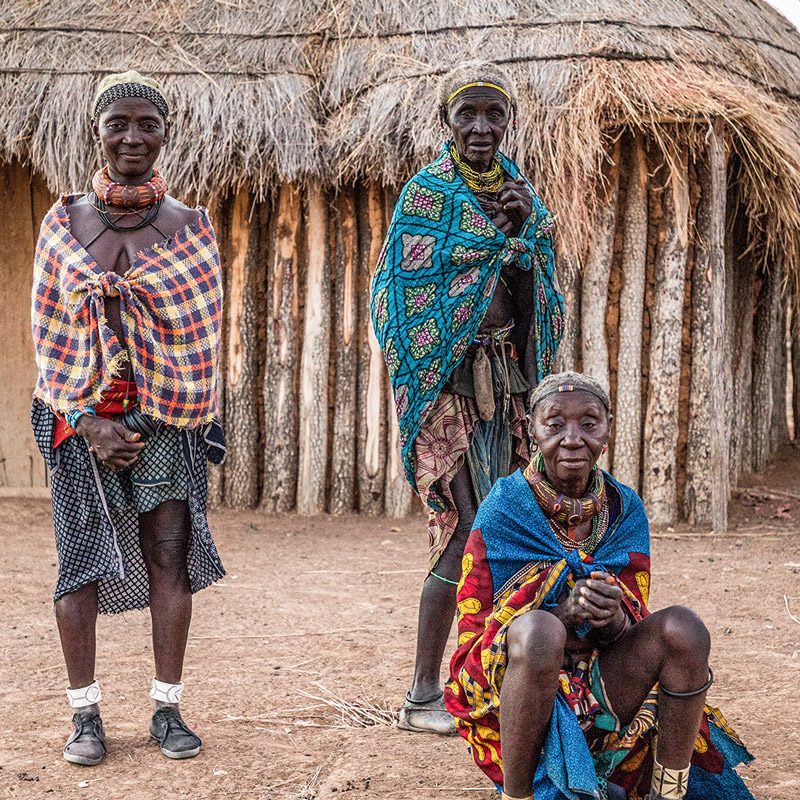
Meeting with the Gambue tribe during a trip to Angola.
Gambue art and architecture
This rancher and farmer society produces some of the largest barns made of plants in Africa. They are true works of rural art. Gambue women are good artisans and design beautiful basketry, both for their own consumption and for sale.
Men carve short club-shaped sticks, called ‘porriños’, which are a symbol of power among herders in southern Angola. Clay pipes, metal jewelry, bead and clay necklaces, are other examples of their art. At an architectural level, Gambue houses are similar to those of the Muila, but somewhat smaller, and the towns are more compact, always enclosed by a stockade of logs.

Do you want to meet the Gambue tribe of Angola?
Join us on our next trips to Angola to meet the Gambue tribe of Angola. Discover their world on our trips:
● Trip to Angola from 6 to 17 April 2024. See the trip to Angola in April 2024.
● Trip to Angola from 4 to 17 August 2024. See the trip to Angola in August 2024.

Traditional Gambue hairstyle.
Aesthetics and Belief System
For traditional Gambue women, hairstyle is very important and meaningful. The women coat their hair with a mustard color paste made of a crushed yellowish stone, mixed with cow dung and herbs. Besides, they decorate their hair with beads. Gambue women, mainly those above fifty years old, also wear impressive necklaces known as ‘missanga’. Once married, they start to wear a set of stacked up bead necklaces, called ‘vilanda’. The women never take their necklaces off and they even have to sleep with them. They also use wooden headrests, some beautifully carved, to protect their hairstyles.
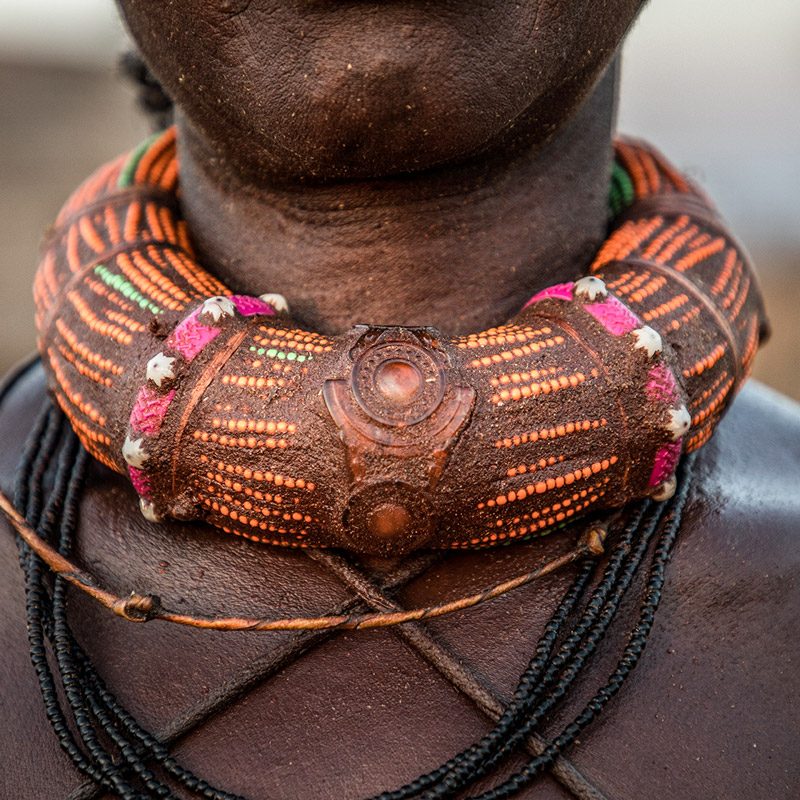
Traditional Gambue necklace, called 'missanga'.
Nowadays, only the elder generations wear the traditional attires, with the exception of remote groups in Cunene Province where one can find younger women with the clay traditional hairdo. The Gambue combine their traditional religion, related to the bull worshiping, with Christianity, increasingly present in areas near urban centres.
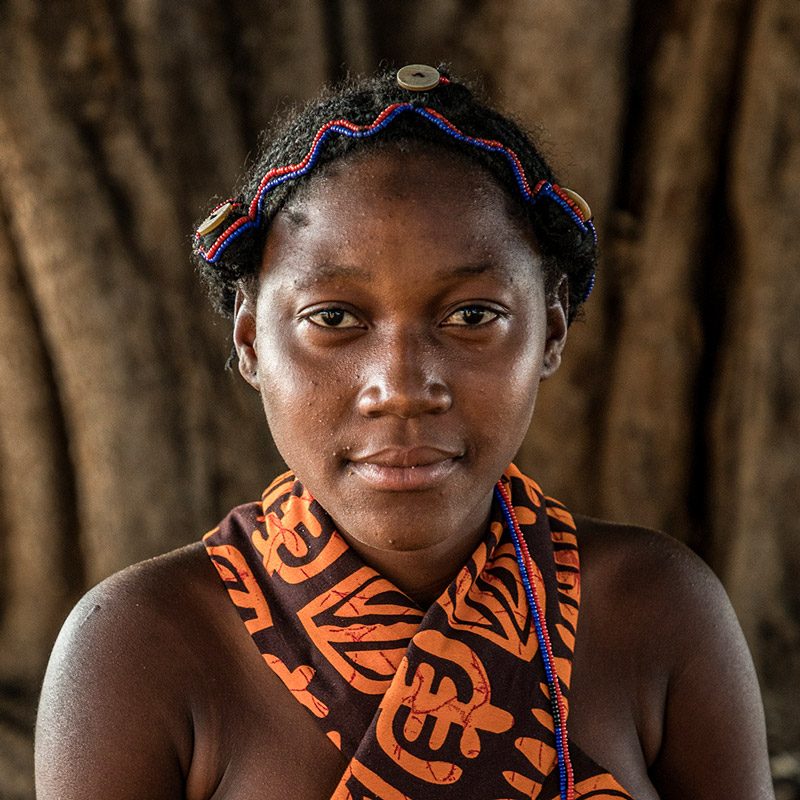
Young Gambue with traditional hairstyle.
Callenges
The Gambue people are the least known of the Huila Plateau. Their neighbors, the Handa, the Muila, and the Humbi attract the attention of tourism that seeks an impressive aesthetic that perhaps they do not possess. However, it is one of the Angolan tribes that has best been able to preserve its customs and has known how to adapt to the challenges of the new times. The proximity to the Bicuar National Park, the presence of Khoisan families in its territory and the proximity to Lubango open a hopeful future for this forgotten society.
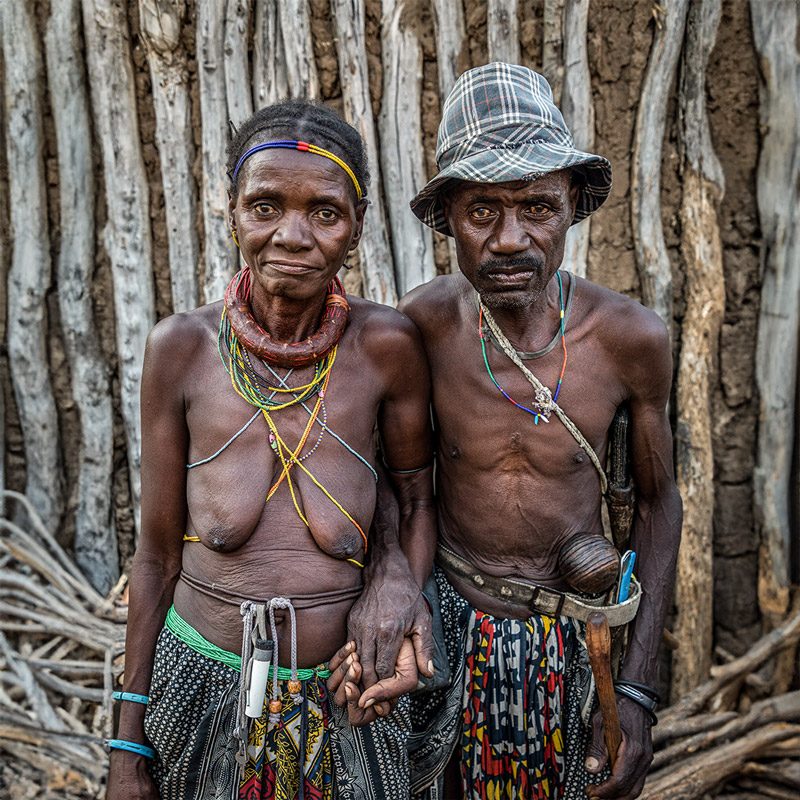
Discover the tribes of Angola with the book 'Last Tribes of Angola'
If you want to know more about the tribes of Angola, the book 'Last tribes of Angola' is available for sale. It is the result of the joint work of the anthropologist Joan Riera and the ethno-photographer Aníbal Bueno. Written in both English and Spanish (a bilingual edition) and enriched with a wealth of photographs, illustrations, and maps, the book is a unique visual guide to the most remote tribes of southwestern Angola.
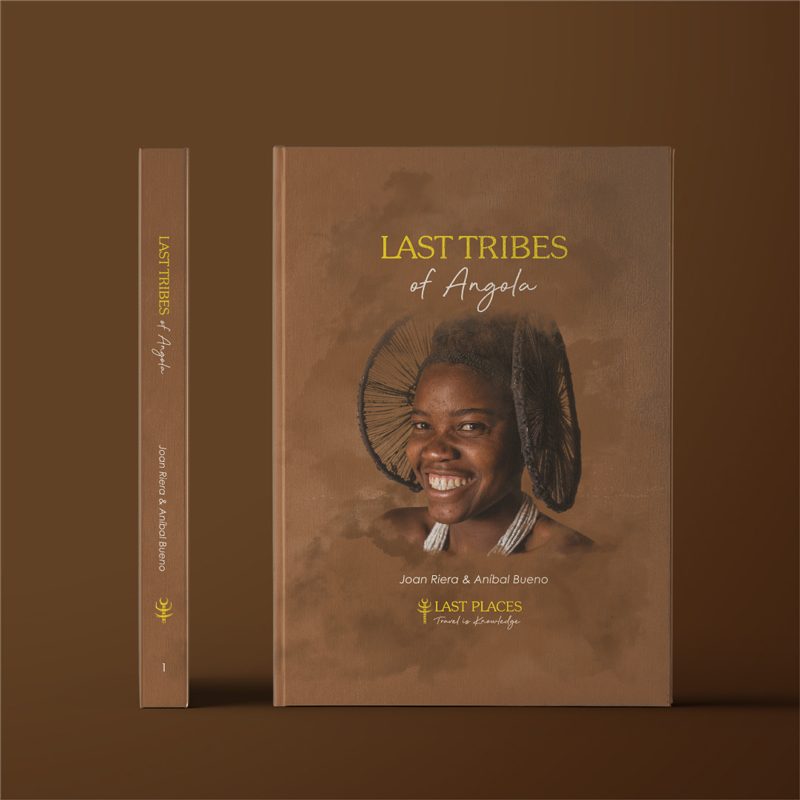
Do you want to buy the book 'Last Tribes of Angola'?
► For shipments to the Iberian Peninsula and Islands, you can buy the book in the Exlibric online store. Click here to buy it.
► For shipments to the rest of the world, you can buy the book on Amazon. Click here to buy it.
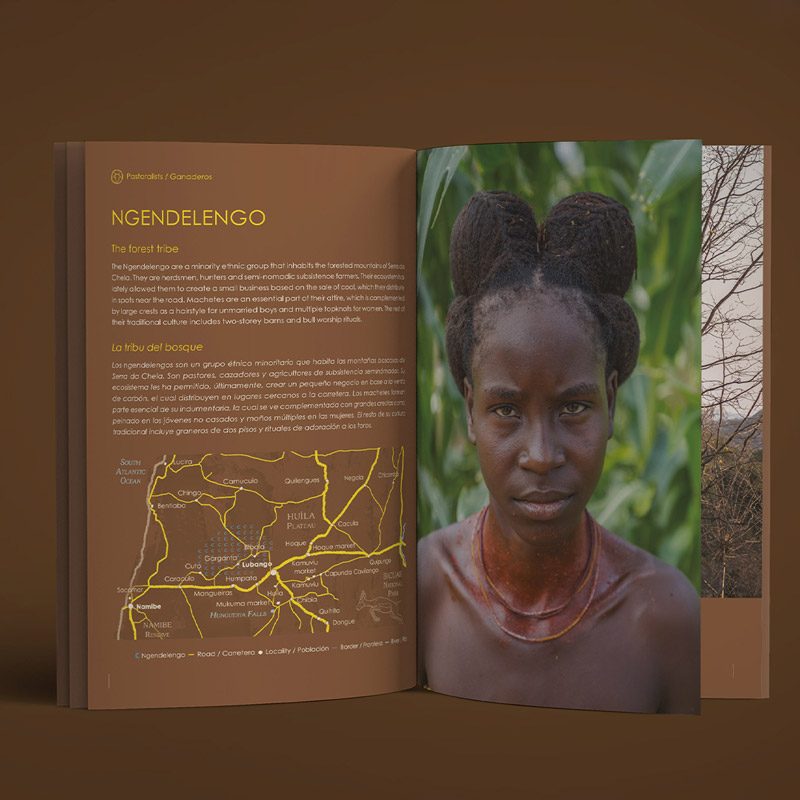
You can learn more about this tribe at www.101lasttribes.com
© Photos by Aníbal Bueno taken during a trip to Angola.
